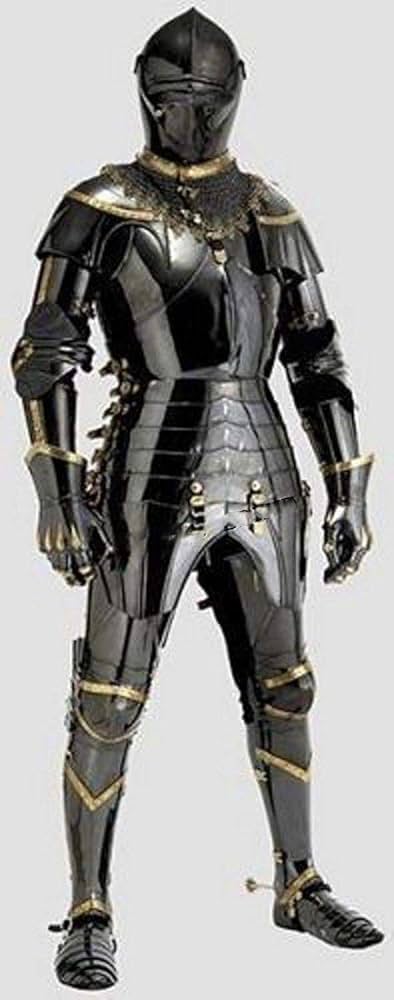A medieval armor suit refers to the protective gear worn by knights and soldiers during the Middle Ages, typically ranging from the 5th to the 15th century in Europe. These suits were designed to offer protection against various weapons such as swords, spears, arrows, and maces, while also providing mobility and flexibility for the wearer.

A typical medieval armor suit consisted of several components:
- Helmet: Protecting the head was crucial, so helmets were a fundamental part of armor suits. They came in various styles, from simple conical helmets to elaborate visored helmets.
- Body Armor: This could include a combination of chainmail, padded garments (gambeson), and metal plates. Chainmail was made of interlocking metal rings and provided excellent defense against slashing attacks, while metal plates offered protection against piercing blows.
- Gauntlets: Hand protection was essential, and gauntlets were worn to shield the hands and wrists. They were typically made of metal plates or chainmail.
- Greaves and Sabatons: Greaves protected the lower legs, while sabatons protected the feet. They were often made of metal plates or chainmail.
- Cuirass or Breastplate: This was the central piece of body armor, covering the chest and abdomen. It could be made of metal plates or be a combination of metal and leather.
- Shield: Although not technically part of the armor suit worn on the body, shields were commonly used alongside armor for additional protection. They varied in shape and size, from small round shields to larger kite shields.
Each suit of armor was custom-made to fit the individual wearer and could be quite expensive to produce. Over time, armor designs evolved to adapt to changes in warfare and technology, eventually becoming more specialized as firearms became prominent on the battlefield.